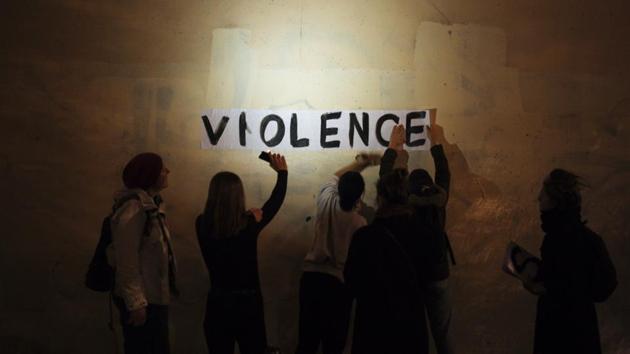To stop gender-based violence, target attitudinal change through interventions in education, ad campaigns and other behaviour change communication
 A study of violence during the lockdown by Saravana Ravindran and Manisha Shah published on(AP)
A study of violence during the lockdown by Saravana Ravindran and Manisha Shah published on(AP)
Head bleeding, the woman had managed to get to a police station in Delhi only to be told to come back with a mask. Elsewhere, another victim of domestic violence was chastised: “People are dying and you want to file a case for such a small issue.”
The two incidents, documented in a seven-state survey, At Home, At Risk by a consortium of eight non-governmental organisations (NGOs), highlight the problem of domestic violence redressal during the pandemic. There has been a massive surge in gender-based violence globally. In India, the National Commission of Women (NCW) reported an exponential rise, the largest in a decade, noting that a third of 13,410 complaints, including 4,350 of domestic violence, were filed during the lockdown.
Cases of marital violence shot up by 99% during the lockdown compared to pre-pandemic times, while violence against trans-people was up 92% and natal violence 50%.
Post-lockdown there is a distressing lack of data; only anecdotal evidence. “Financial difficulties, lack of work, shortages of basic necessities and mental stress is causing a very tense environment at home,” says Krati Prakash, Breakthrough India’s Uttar Pradesh head.
Violence against women is hardly new. National Crime Records Bureau data for 2018, the latest year for which it is available, recorded the murder of 8,500 women by a spouse or family member — more than 23 women a day — in addition to 1,03,372 reported domestic violence cases. Those that go unreported are anybody’s guess.
And yet, the pandemic might provide an opportunity to fight this ingrained violence with renewed vigour. If you’re a bystander, says Breakthrough’s Sohini Bhattacharya, you can intervene without putting yourselves in harm’s way. Underutilised Nirbhaya funds can prop up one-stop centres and shelter homes.
A study of violence during the lockdown by Saravana Ravindran and Manisha Shah published on IdeasForIndia finds a link between attitudes and domestic violence.
In districts where men justified the use of violence to a National Family Health Survey in 2015-16, the researchers found much higher cases of violence during the pandemic. In districts where women justified violence, reporting was the least.
There’s an important lesson for policymakers here. To stop gender-based violence, target attitudinal change through interventions in education, ad campaigns and other behaviour change communication.
The global 16-day campaign against gender violence that ended on December 10 reminds us of the remaining 349 days of hard work teaching young boys and girls why violence is unacceptable.
Concerned about the peak in violence, in April a group of NGOs wrote to Niti Aayog, NCW and the ministry for women and child welfare asking that helplines and support services be declared as “essential” during the lockdown. To date, the NGOs have no clarity on whether this was done.
Namita Bhandare writes on gender
The views expressed are personal